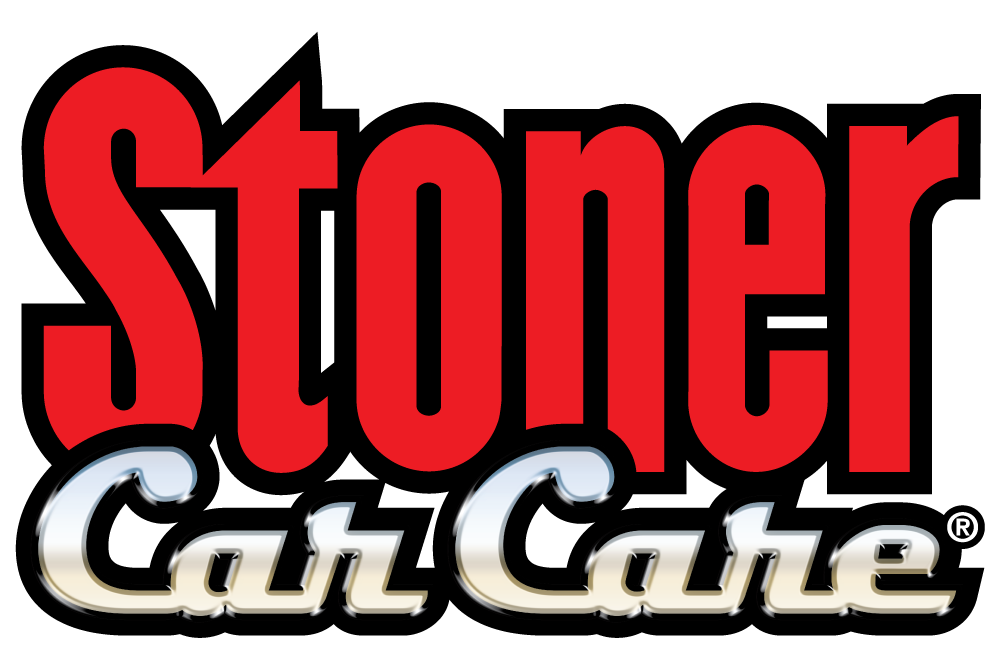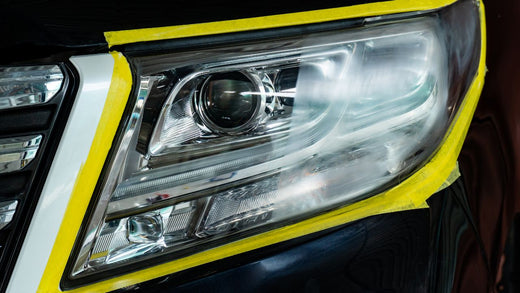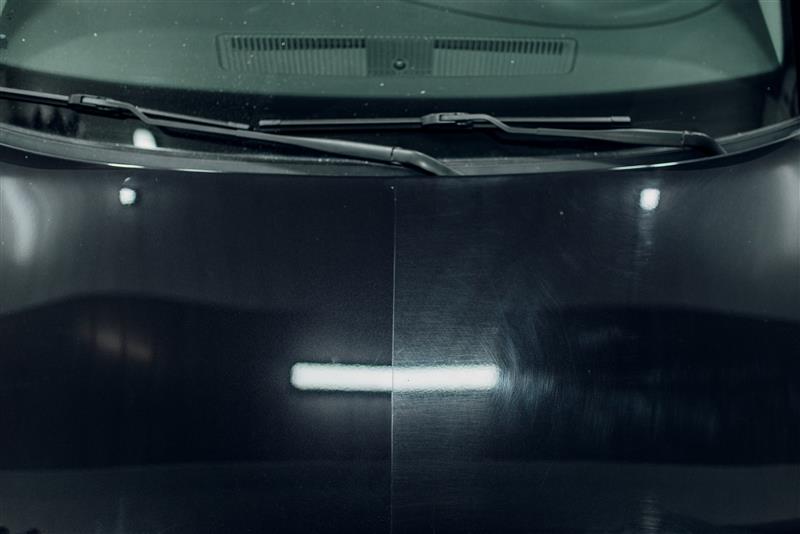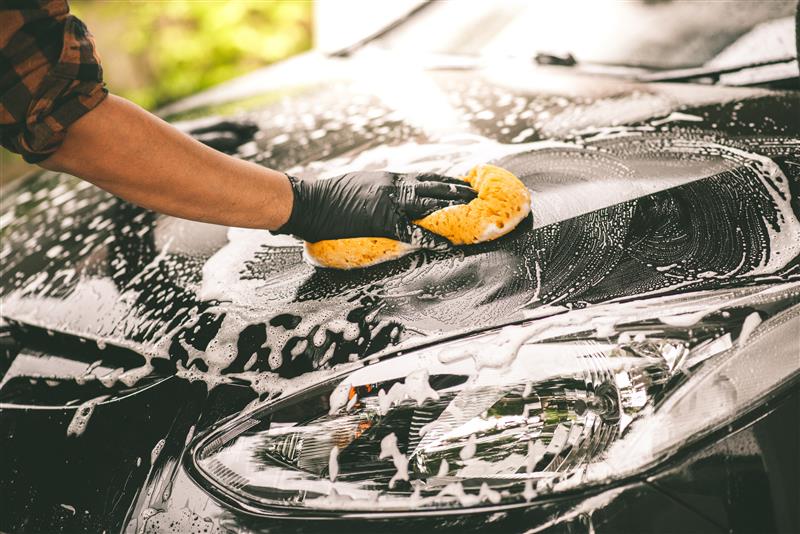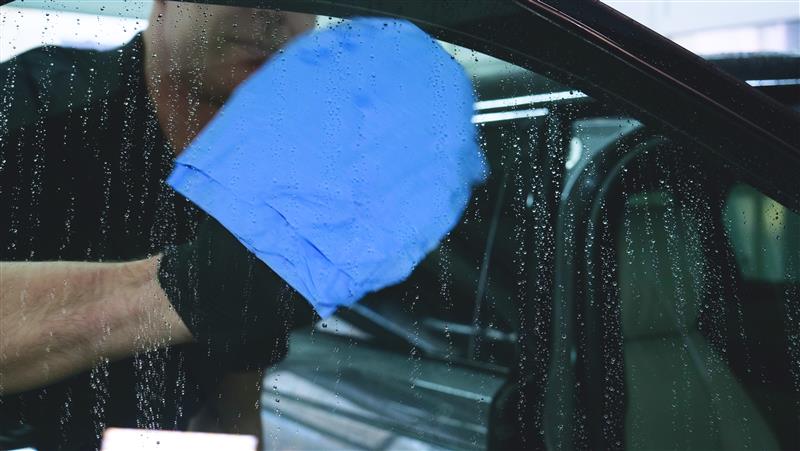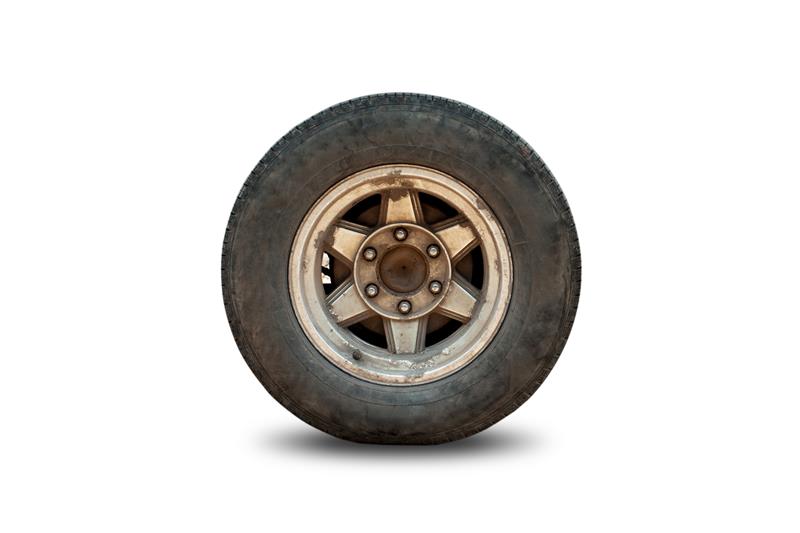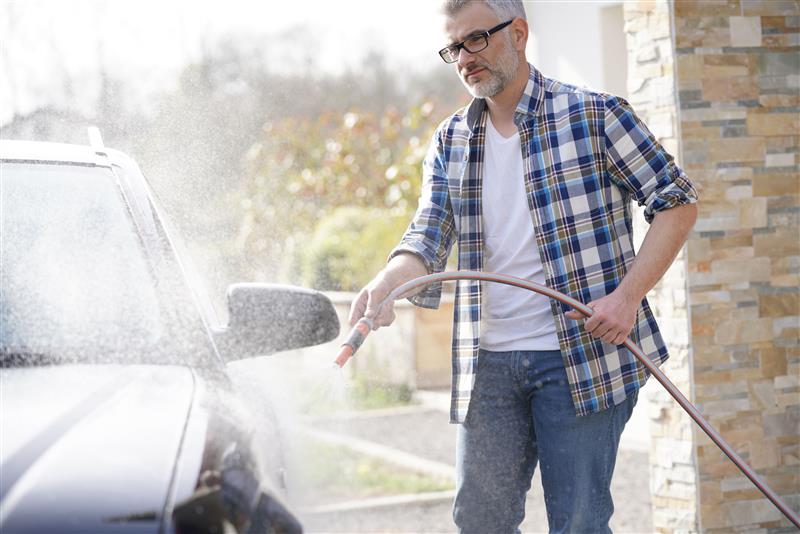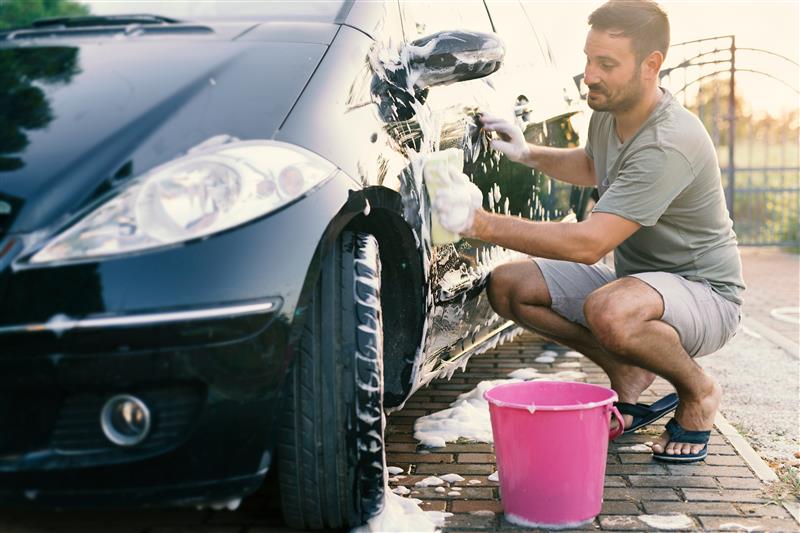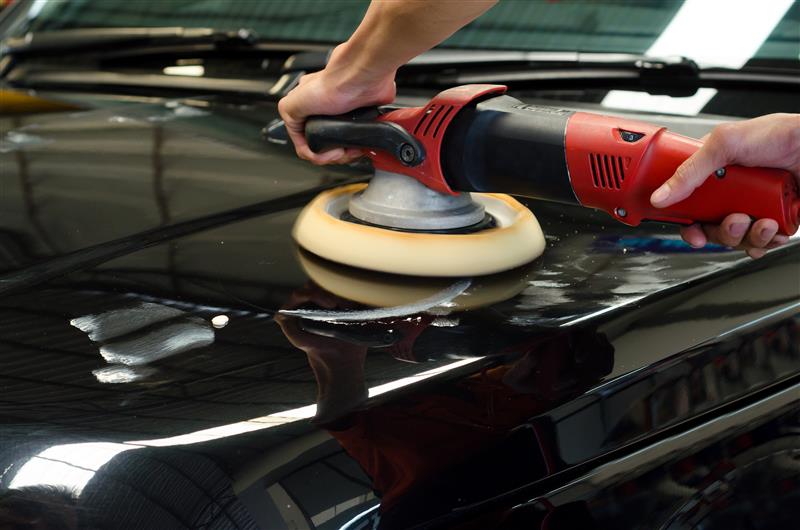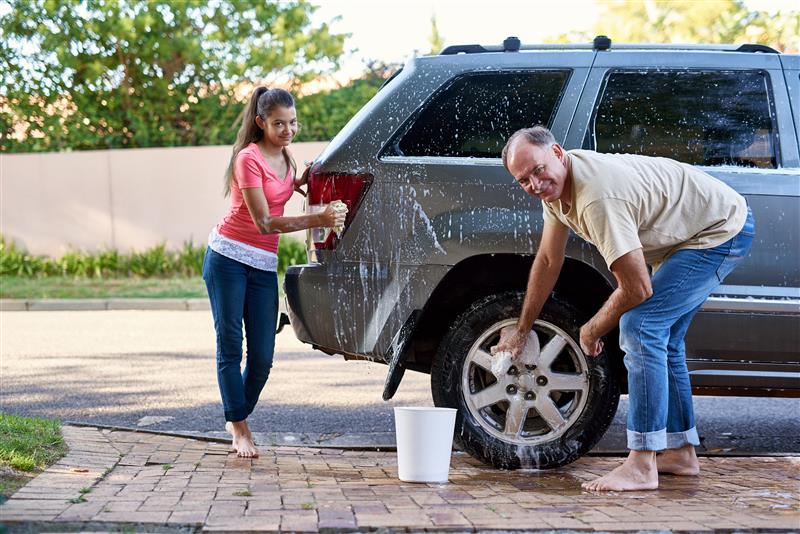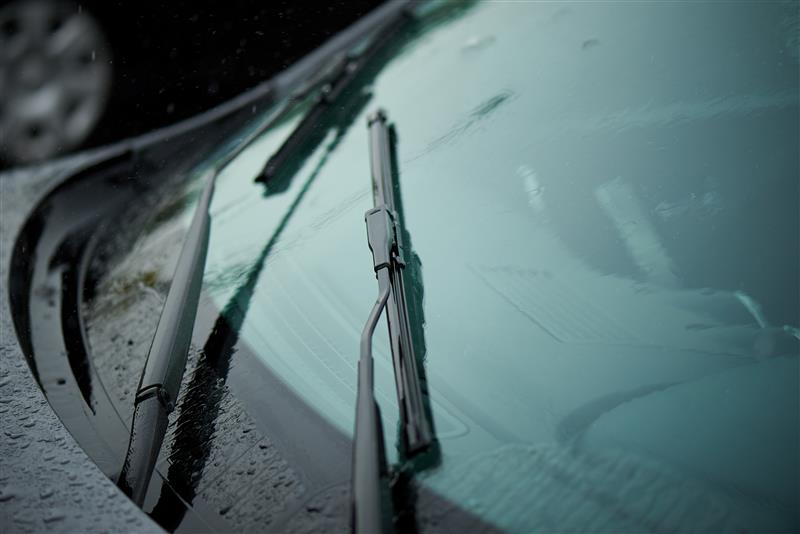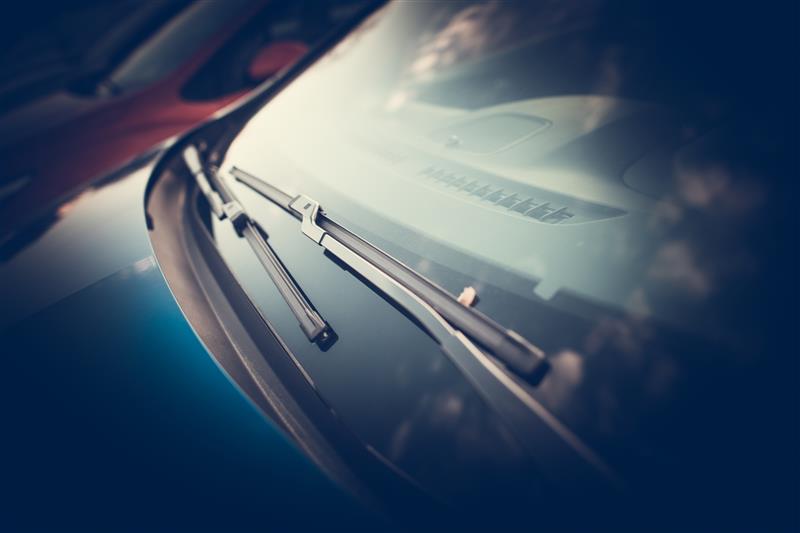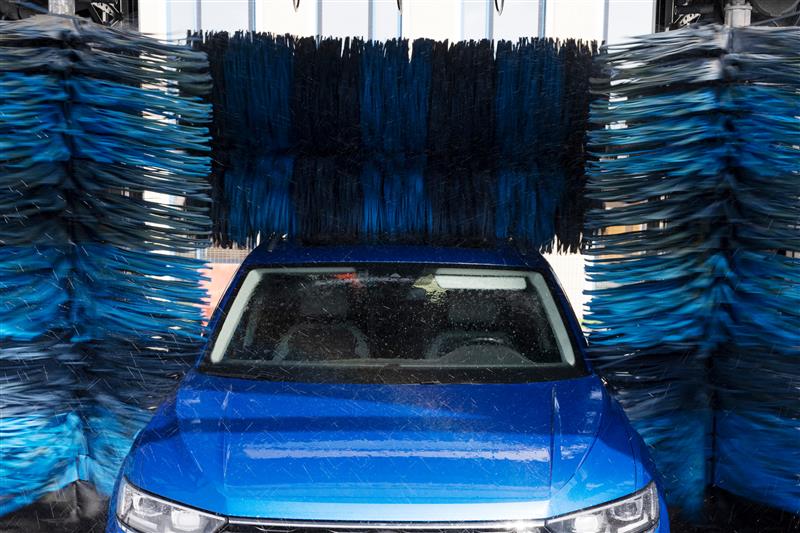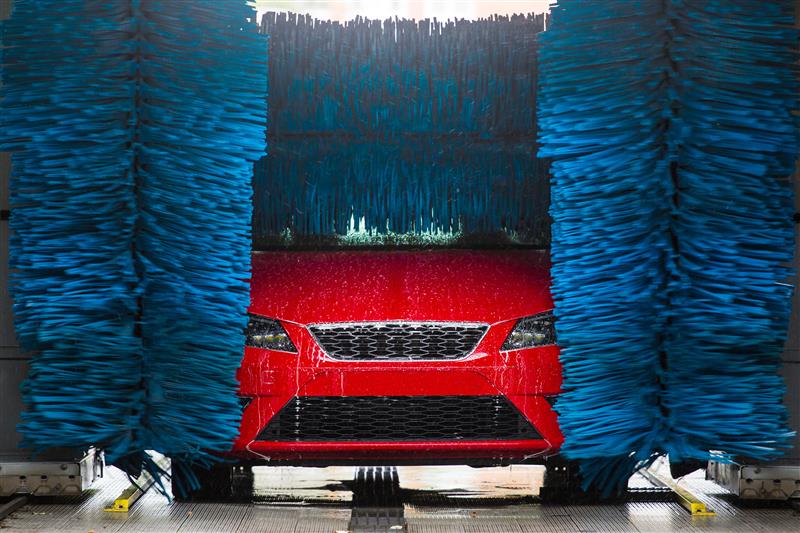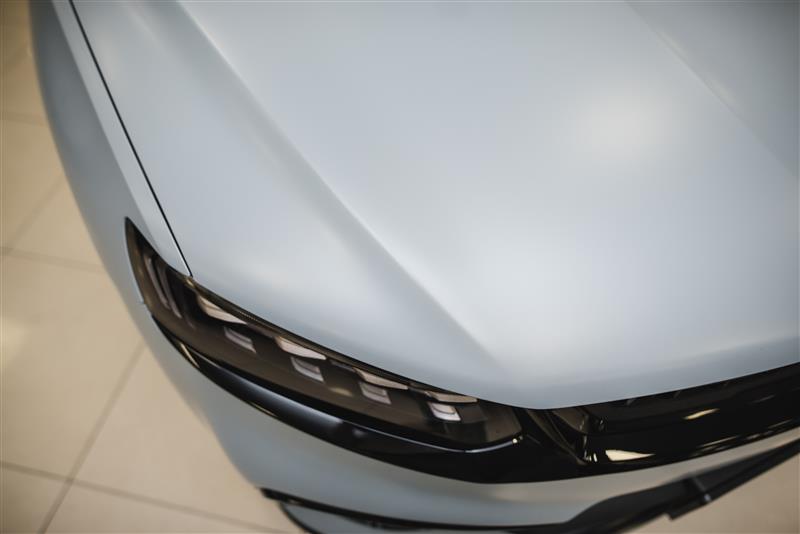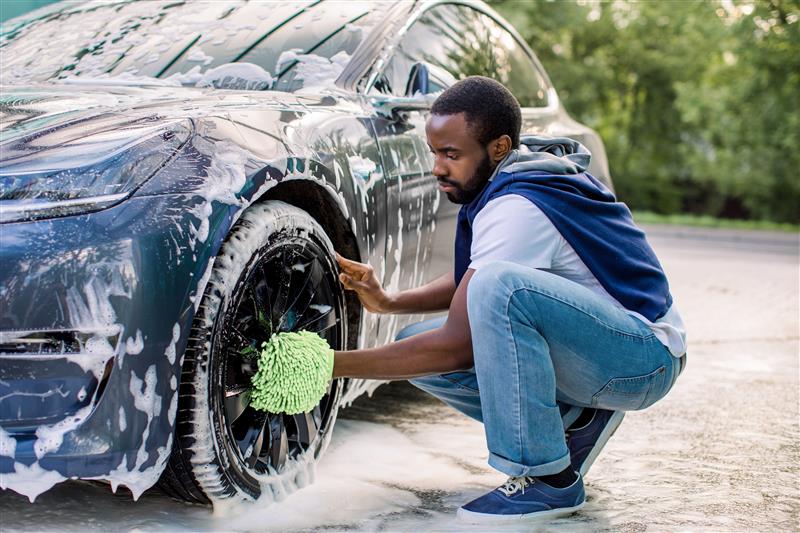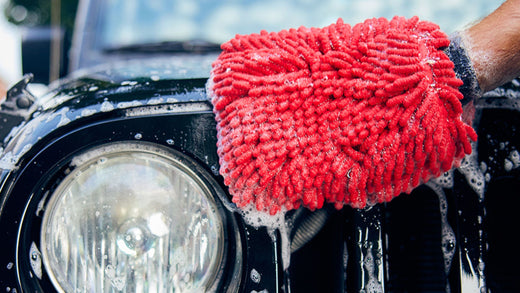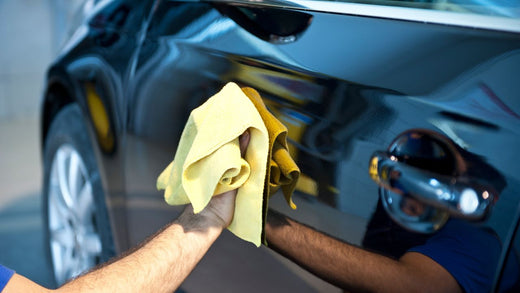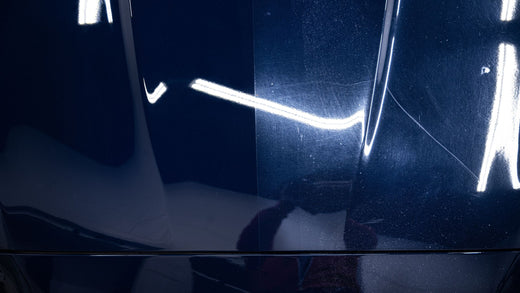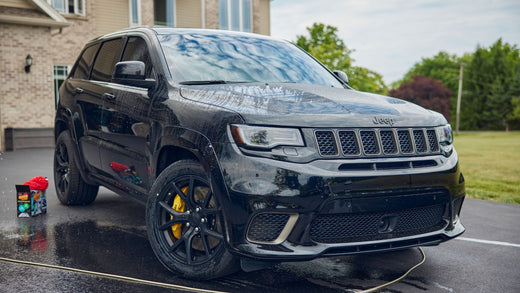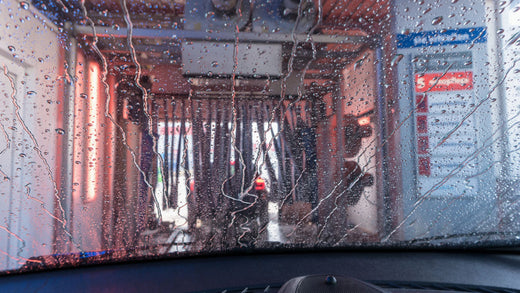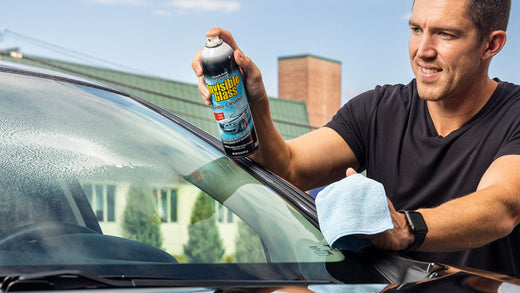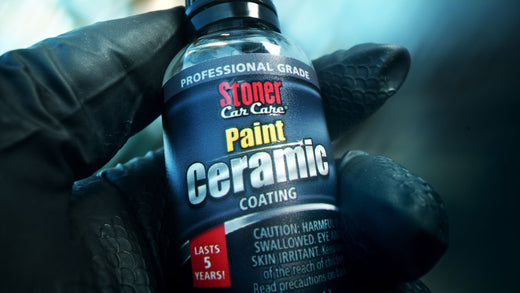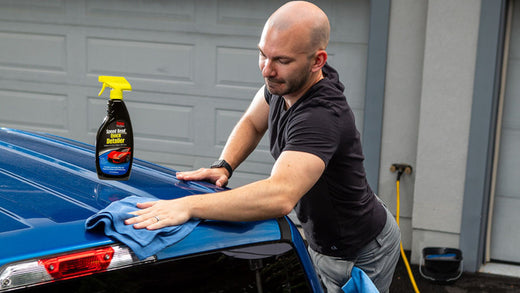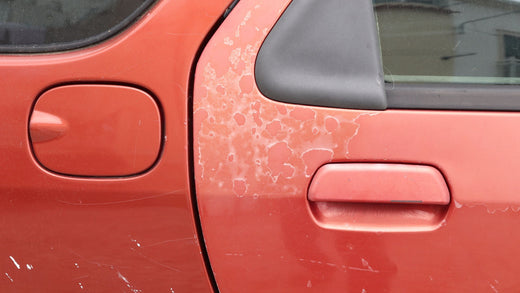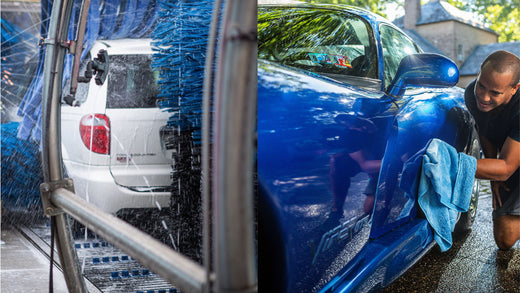Clear vision ahead with our holiday markdowns on Invisible Glass Ceramic Silicone Wiper Blades. Prices as marked.
Within the past 100 years, automotive headlights evolved from simple oil lamps to sleek design elements featuring adaptive technology. The first headlights offered visibility similar to that of cell phone flashlights.
Technology has improved headlights drastically. They’ve gone from small glass lamps to using plastic compounds that are both durable and lightweight. A trade-off to using plastic compounds is that they’re susceptible to two issues -- yellowing and oxidation. In this article, we’ll explore the step-by-step process for permanent headlight restoration.
To restore the beauty and functionality of your headlights, follow these steps: Rinse off large debris, sand with progressively finer grit, buff with a cutting compound, and finish with a protective coating.
Tools & materials list:
- Hose/Water Bucket
- Microfiber Towel
- Painter’s tape
- Cutting compound
- 600, 1500, and 3000 grit sandpaper/sanding pads
- Invisible Glass Ceramic Coating
The science behind cloudy/yellow headlights
Vehicle headlights begin to show age after only three to five years on the road. How and why does this happen?
The yellowing process that occurs in headlights is called oxidation – a reaction that is facilitated by sun exposure and heat cycling. Most modern headlights include an acrylic compound susceptible to oxidizing. In addition, exposure to the sun's UV radiation weakens your headlights and allows microscopic cracks to form. These cracks cause your headlight lenses to appear foggy.
Some elements oxidize easier than others. For example, the Statue of Liberty, made of copper, is a landmark example of oxidation. Originally a dark, copper brown, the Statue oxidized over time to the green we see today.
If oxidation is the main villain, moisture is its sidekick. High moisture content in the air causes water vapor to form inside cracked headlamps, and this vapor becomes trapped within the headlight unit when the air outside becomes drier or less humid. Though water should not break your headlamp, it may distort light as it passes through the polycarbonate lens, making it hard to see the road as clearly in the dark.
Many factors damage your headlights over time. They suffer wear and tear in everyday driving: Road chips, salt, dirt, and water vapor also cause damage. Thankfully, you can correct these issues. Here is our step-by-step process for permanently restoring headlights:
Rinse off large debris
Rinse the headlight and surrounding area to remove debris. The headlamp restoration process involves abrasion, and any leftover debris may cause irreversible etching. Prevent this potential damage with a thorough rinse, then dry thoroughly with a soft microfiber towel.
Once the surface is clean, use painter's tape to cover the painted areas surrounding the headlight. The next step will involve sanding; even light pressure can scratch paint and trim. We recommend using painter's tape as a safety buffer from your sandpaper. If necessary, prop the car hood open to give yourself more room to work.
Sand with progressively finer grit
After cleaning and taping your headlamp, prepare to carefully sand away yellowing and cloudiness. Sandpaper removes the thin layer of oxidized plastic on the exterior of your headlight.
We recommend wrapping the sandpaper around a pad or using a drill pad to provide uniform pressure. We'll be using three different sandpaper grits. Grit is the rating of the size of abrasive materials on sandpaper; the lower the grit, the coarser your sandpaper. The higher the number, the finer the abrasive – which creates a smoother finish.
Begin with the 600-grit sandpaper. Spray both the sandpaper and your headlight with some water for lubrication. Sand horizontally with a back-and-forth motion using light to medium pressure. Re-apply water as needed. You'll know you're finished with your first sandpaper when you see the headlamp yellowing begin to dissolve. As you work, the headlight unit will eventually fog back up, even more so than before. Don't panic – this is normal. The fogginess comes from the sandpaper etches.
Next, apply water to the headlight and 1500-grit sandpaper. Scrub with light to medium pressure in a vertical pattern to help remove scratches from the first sandpaper round.
Finally, repeat the same process in a horizontal pattern with the 3000-grit sandpaper. With the small layer of oxidized plastic removed, you may see tiny scratches still lingering on the surface of your headlight from sanding. These necessary scratches help compound and polish to adhere in our next steps.
Buff with a cutting compound
Cutting compounds remove scratches or minor paint defects. These pastes contain abrasive materials that polish out blemishes and remove oxidation. In fact, cutting compounds alone may effectively remove minor oxidation and fogginess.
Apply your compound to a microfiber towel or polishing pad if you're using a drill. Start buffing using a uniform pressure. Though drills may speed up this process, be cautious with the speed and amount of time you spend drilling in one area. Too much friction can melt or deform headlight plastic. Start with horizontal passes before switching to vertical strokes. Once you've covered the entire headlight sufficiently, rinse and wipe with a clean microfiber cloth.
This step should visually revive your headlight's shine. If you notice lingering fogginess, continue buffing the headlight until you achieve the desired result. You can conclude your restoration process here, but we highly recommend you take one additional step:
Finish with a protective coating
Without any protection, oxidation will reoccur. Headlight restoration is no easy task, so take additional steps now to prevent a lengthy reconditioning process in the future. We'll briefly review three standard methods, including one that we recommend.
Aftermarket headlight coating
Automotive manufacturers place a protective coating over your headlight post-production. This, however, wears down over time – leaving the surface of your headlight at the mercy of outdoor elements.
Aftermarket headlight coatings are affordable and readily available at your local automotive store. The application is straightforward, requiring one or two sprays on each headlight. The only downfall to aftermarket coatings lies in their durability. These coatings protect for about a year. Aftermarket headlight coatings are a great alternative if you are working on a budget and if you don’t mind applying the product yearly.
UV Hardcoat
Manufacturers apply UV Hardcoat for headlight protection. Unfortunately, this material only comes in commercial (or large) quantities, and you’ll need a professional-grade spray gun and a UV heat lamp to apply it successfully. If you are a professional detailer, this might be a viable option. Most UV hardcoats offer protection for up to five years.
Invisible Glass Ceramic Glass Coating
Invisible Glass’s Ceramic Glass Coating utilizes true ceramic technology. It offers the best of both worlds; it lasts more than a year and it doesn’t require professional-grade tools or experience to apply. This product utilizes polysilazane, which is an all-natural, organic ceramic. It creates a highly resistant covalent bond that’ll protect your headlights from UV rays, heat, weather, and abrasion. The ease of application combined with product lifespan make this the option we recommend.
|
Good Protection
AFTERMARKET COATING |
Better Protection
UV HARDCOAT |
Best Protection - We Recommend!
INVISIBLE GLASS CERAMIC GLASS COATING |
|---|---|---|
|
Positives:
|
Positives:
|
Positives:
|
|
Negatives:
|
Negatives:
|
Negatives:
|
The future is bright!
While headlight restoration is a delicate process, it's well worth the time and effort. Headlight units can cost hundreds of dollars to replace. Follow our cleaning process to restore and protect your headlights: Rinse off large debris, sand with progressively finer grit, buff with a cutting compound, and finish with a protective coating. These steps will keep your wallet fat, your headlights bright, and your travels safe.
